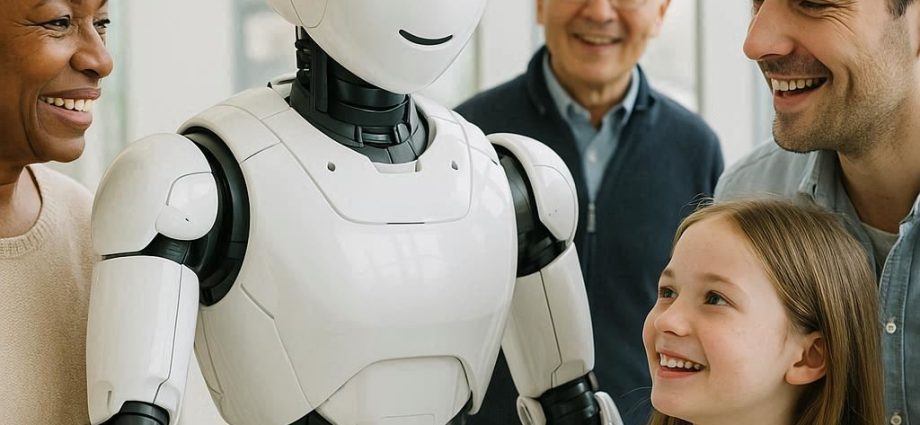Artfiicial Intelligence (AI) is transforming the workplace faster than any previous technology. From AI automating jobs in marketing and coding to accelerating product development, the question has shifted from “Will AI replace jobs?” to “How quickly will AI change the job market?”
Some experts, like Mo Gawdat, ex-Chief Business Officer at Google X, predict a job apocalypse by 2027. Others, including studies from Microsoft and the OECD, say AI will mainly augment jobs before replacing them entirely.
This article takes a realistic, evidence-based look at AI job displacement trends using both current research and prophetic predictions.
The Current State of AI Job Automation
1. Task-Level Automation Is Leading the Way
A 2023 OECD study found that AI is more likely to replace specific tasks within jobs rather than eliminate entire occupations in the short term. Examples include:
- AI drafting legal contracts (lawyers still negotiate and advise)
- AI reading medical scans (doctors still diagnose and treat patients)
2. Smaller AI Teams, Bigger Output
Data from MIT and Stanford shows AI-assisted workers complete tasks 30–50% faster without sacrificing quality.
- Example: Mo Gawdat’s Emma.love startup — 3 people plus AI doing the work that used to require ~350 developers.
3. Impact Varies by Industry
While AI-related layoffs have hit tech, marketing, and customer service hard, sectors like construction, hospitality, and healthcare remain more insulated for now due to their physical and interpersonal demands.
Expert Predictions: The Fast Lane to AI Disruption
- Mo Gawdat (2023): Most knowledge work replaced by 2027, including C-suite roles.
- Geoffrey Hinton (2023): Rapid white-collar automation is likely if AI continues its current pace.
- Bill Gates (2024): AI could handle most functions of doctors and teachers within 10 years.
- Dario Amodei (2023): High-skill jobs could face automation within the 2020s if AI reaches key capability milestones.
Why Full AI Job Displacement Will Be Uneven
Even with powerful AI tools, real-world adoption faces friction:
- Regulatory compliance slows automation in healthcare, finance, and law.
- Public trust issues delay AI decision-making in leadership.
- Labour protections can slow layoffs.
- Interpersonal complexity makes human leaders harder to replace.
AI Job Displacement Risk Levels
| High Risk – Soon | Moderate Risk | Lower Risk – For Now |
|---|---|---|
| Copywriting, content marketing | Financial analysis | Skilled trades (plumbing, welding) |
| Routine software development | Customer support | Field healthcare |
| Video/audio editing | Technical documentation | High-touch client services |
| Data entry and back-office processing | Mid-level management | Regulated executive leadership |
Realistic Timeline for AI Job Market Changes
2024–2026:
- Fast disruption in digital-first industries
- AI-native teams outperform large traditional ones
2027–2029:
- Repetitive white-collar jobs shrink significantly
- Middle management faces AI coordination tools
2030–2035:
- Wider automation in physical and regulated industries
- Partial automation of leadership decision execution
How to Prepare for AI in the Workplace
- Move Up the Value Chain – Focus on strategy, problem framing, and oversight.
- Become AI-Native – Learn how to integrate AI tools into your core work.
- Own the Human Interface – Strengthen skills in negotiation, empathy, and client relations.
- Build AI Evaluation Skills – Know how to test and validate AI outputs.
Frequently Asked Question
Q: Will AI replace my job? A: AI is already automating tasks in many jobs, especially digital, repeatable work like content creation, coding, and data entry. Full job displacement is less common in the short term, but roles that do not involve human interaction or strategic oversight are at higher risk over the next 5–10 years. The best defence is to upskill in AI integration, governance, and interpersonal competencies.
Bottom Line: AI is not just a future threat — it’s here now, changing how work gets done. While a complete “job apocalypse” by 2027 is unlikely, the AI job displacement curve is steep for certain roles. Those who adapt early, learn to work with AI, and move into higher-value functions will be the ones who thrive in the future of work with AI.
